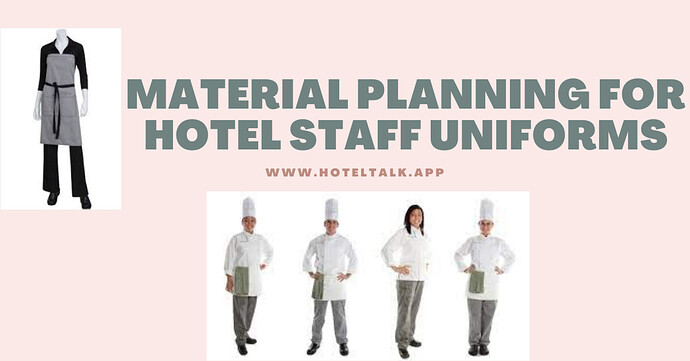Many hotel departments have uniformed employees. In some cases, each department maintains its own individual supply inventories of uniforms; in other cases, the housekeeping department is the custodian of uniforms used throughout the hotel. If the housekeeping department is the custodian of all uniforms, a large secure storage space, along with worktables and repair capability, are necessary.
Uniforms may be processed in the laundry daily and be issued each workday as the employees report to work. Some uniforms may be subcustodied to specific employees who maintain their own uniforms. Some hotels have uniform services provided by companies that purchase, launder or dry clean, and provide 5 par of uniforms for each employee on a weekly basis. The hotel must pay a premium for this service, since the servicing company must purchase 11 uniforms for each new employee when hired.
The simplest, most cost-effective method of administering a uniform program is for each department to maintain its own uniforms and to sub-custody them to employees at the time of employment, allowing each employee to care for the uniforms issued.
Housekeeping uniforms need not be unattractive or uncomfortable. They should fit well and allow for freedom of movement, since much reaching and bending is involved in housekeeping work. A sleeveless dress with a short-sleeved blouse or shirt is a must, and a pocket or two is always helpful. Cotton is best for comfort, but polyester fabrics are the most plentiful. The quality of the GRA’s and the senior housekeeper’s uniforms should be similar, but color distinctions may be made.
An inventory of four different uniforms is appropriate for housekeeping personnel: GRA (female), housekeeping aide (male), supervisor (female), supervisor (male). A reasonable uniform program would allow for the issue of two uniforms to each employee upon employment and an issue of a third uniform after completion of a probationary work period. Should uniforms become damaged or worn out as a result of work, they should be replaced. Carelessness that causes destruction of uniforms should be the subject of counselling or disciplinary action.
The law requires that employees who are required to clean their own uniforms be compensated. The law suggests that laundry service in the hotel laundry might be a reasonable alternative to an outlay of cash. A total inventory of uniforms should include about 5 par, the rest being available to fit new employees or to provide replacements for the staff. Sizes range from very small (4, 6, 8) to very large (22, 24). It is a difficult task, however, to maintain a correctly sized inventory.
Decisions that are made regarding the purchase and use of assets without a sufficient investigation into the characteristics and qualities of those assets can seriously affect the profit picture. Costs for linens and their maintenance need to be continually assessed in order to determine if the right decisions were reached and to avoid the repetition of costly mistakes.
In addition, the costs for linens should always be evaluated on a cost-per-room-per-day basis, never on a cost-per-pound basis. If linen costs are evaluated on a cost-per-room-per-day basis, the level of consumption by the guest can also be addressed in the formula.
Linen maintenance and replacement is an ongoing cost of doing business. It is the housekeeping manager’s responsibility to ensure that these costs remain reasonable while continuing to meet the guest’s expectations.
